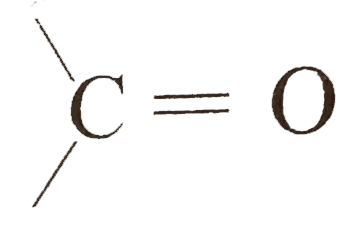Which of the following have −M effect (¯e - withdrawing mesomeric effect) ?

−SO3H
−OR
−Br
The correct Answer is:A, B
To determine which of the following groups exhibit the −M effect (electron-withdrawing mesomeric effect), we need to analyze each group based on its ability to withdraw electrons through resonance. The −M effect is characterized by groups that can pull electron density away from a conjugated system or double bond.
1. Understanding the −M Effect:
- The −M effect refers to the ability of certain substituents to withdraw electron density from a conjugated system or double bond through resonance. This typically occurs when the substituent has a lone pair of electrons that can be delocalized into the system.
2. Identifying Groups:
- We need to analyze the given functional groups to see if they exhibit the −M effect.
3. Analyzing the CO Group:
- The carbonyl group (C=O) is a strong electron-withdrawing group due to the electronegativity of oxygen. It can pull electron density from adjacent double bonds or conjugated systems, thus exhibiting the −M effect.
4. Analyzing the SO3H Group:
- The sulfonic acid group (SO3H) is also an electron-withdrawing group. It has a strong −M effect because it can withdraw electron density from the conjugated system through resonance.
5. Analyzing the OR Group:
- The alkoxy group (OR, where R is an alkyl group) does not exhibit the −M effect. Instead, it shows a +M effect (electron-donating) because the oxygen can donate its lone pair into the conjugated system.
6. Analyzing the Br Group:
- Bromine (Br) is a halogen that also exhibits a +M effect due to its ability to donate electron density through resonance. Thus, it does not show the −M effect.
7. Conclusion:
- The groups that exhibit the −M effect are the CO group and the SO3H group. The OR and Br groups do not exhibit this effect.
Final Answer:
The groups that have the −M effect are:
- CO group
- SO3H group
- The −M effect refers to the ability of certain substituents to withdraw electron density from a conjugated system or double bond through resonance. This typically occurs when the substituent has a lone pair of electrons that can be delocalized into the system.
- We need to analyze the given functional groups to see if they exhibit the −M effect.
- The carbonyl group (C=O) is a strong electron-withdrawing group due to the electronegativity of oxygen. It can pull electron density from adjacent double bonds or conjugated systems, thus exhibiting the −M effect.
- The sulfonic acid group (SO3H) is also an electron-withdrawing group. It has a strong −M effect because it can withdraw electron density from the conjugated system through resonance.
- The alkoxy group (OR, where R is an alkyl group) does not exhibit the −M effect. Instead, it shows a +M effect (electron-donating) because the oxygen can donate its lone pair into the conjugated system.
- Bromine (Br) is a halogen that also exhibits a +M effect due to its ability to donate electron density through resonance. Thus, it does not show the −M effect.
- The groups that exhibit the −M effect are the CO group and the SO3H group. The OR and Br groups do not exhibit this effect.
The groups that have the −M effect are:
- CO group
- SO3H group
Topper's Solved these Questions
- GENERAL ORGANIC CHEMISTRYBOOK - CENGAGE CHEMISTRY ENGLISHCHAPTER - GENERAL ORGANIC CHEMISTRYEXERCISE - Single Correct
23 Videos
- GENERAL ORGANIC CHEMISTRYBOOK - CENGAGE CHEMISTRY ENGLISHCHAPTER - GENERAL ORGANIC CHEMISTRYEXERCISE - Assertion-Reasoning
5 Videos
- GENERAL ORGANIC CHEMISTRYBOOK - CENGAGE CHEMISTRY ENGLISHCHAPTER - GENERAL ORGANIC CHEMISTRYEXERCISE - Comprehension
20 Videos
- CLASSIFICATION AND NOMENCLATURE OF ORGANIC COMPOUNDSBOOK - CENGAGE CHEMISTRY ENGLISHCHAPTER - CLASSIFICATION AND NOMENCLATURE OF ORGANIC COMPOUNDSEXERCISE - Analytical and Descriptive Type
3 Videos
- HYDROGEN, WATER AND HYDROGEN PEROXIDEBOOK - CENGAGE CHEMISTRY ENGLISHCHAPTER - HYDROGEN, WATER AND HYDROGEN PEROXIDEEXERCISE - Subjective Archive (Subjective)
3 Videos
Similar Questions
Which of the following have +M effect
(¯e - donating mesomeric effect) ?
View SolutionWhich of the following has highest —I effect?
View SolutionWhich of the following has maximum -I effect?
View SolutionWhich of the following group shows +I− effect :
View SolutionWhich of the following group will have strongest electron donating mesomeric effect?
View SolutionWhich of the following explains Haldane effect?
View SolutionWhich of the following is Sewall Wright effect?
View SolutionWhich of the following is effective against virus?
View SolutionWhich of the following group show +M and −l effect?
View SolutionWhich of the following group show −m and −I effect?
View Solution